Most new fly fishers have a hard time telling good advice from poor. Sadly, the internet is full of questionable guidance from people who portray themselves as experts yet lack the requisite skills and knowledge. If you only fish a few times per year, or if you’re relatively new to the sport, it’s not always easy to know who to trust. With that in mind, I’d like to share ten tips that our instructors at the School of Trout offer on a regular basis.
1) Use a well-designed rod, reel & line: It’s not easy to cast, or fish, with poor equipment. You should opt for gear that works for you rather than against you. If you’re fishing for trout, you’ll typically want a medium or medium-fast 4 wt or 5 wt rod in the 8’ to 9’ range, along with a matching reel and line. You won’t, however, need to spend $1,000 or more on a new fly rod. (While there are some absolutely stellar rods in the $1,000 price range, you can buy a nice rod, along with a suitable reel and line, for less than $400.) Oh, and be sure to steer clear of fast action rods that limit both your success and your enjoyment.
2) Practice your knots: As a trout fisher, you absolutely have to know several knots you can tie quickly and effectively. The first should allow you to add a piece of tippet to your leader. The second should attach your fly to your tippet. I use a blood knot and an improved clinch knot. Other folks might prefer a surgeon’s knot or a regular clinch knot. While there are any number of possiblities, you need to pick a knot for each scenario and practice them until you can tie them both in your sleep.
3) Focus on your leaders: Not only is your leader the sole connection between your line and your fly, but it’s vital to both your casting and your presentation. A few years ago fly fishing guru John Juracek started telling our School of Trout students to take pride in their leaders. What did he mean? According to John:
“Taking pride in your leader means having it constructed properly at all times for the type of fishing that you’re doing. That might mean short and stout for streamer fishing, or long and fine for delicate dry fly fishing.
Serious anglers never, ever try to get by with a half-baked leader, because that means making concessions in arguably the most important aspect of your whole outfit. Don’t succumb to laziness in adjusting your leader. Not only will it hurt your success, it also detracts from the pleasures of fly casting — pleasures that should never be overlooked or dismissed.
When someone asks to look at my leader, I’m always happy and excited to show it to them. No excuses, no apologies, just a feeling of pride as they look on at a professional setup—a setup which is within reach of all of us if we merely take the time.”
4) Practice your casting: The single biggest thing you can do to help your angling in the near term is to improve your fly casting. Unfortunately, most beginning fly fishers can’t tell a good cast from a poor cast and have no idea what a fundamentally-sound fly casting stroke looks like. Since it’s not always easy to describe an ideal cast, or a well-executed casting stroke, let’s illustrate them instead. Here’s one of the finest fly casters on the planet, John Juracek, demonstrating exceptional fly casting.
And here’s another wonderful fly caster, Pat McCabe, showcasing stellar form.
If your casting mimics Pat’s and John’s, then you’re in great shape. If not — if you’re pivoting at your elbow, or pushing and pulling the rod, or casting solely with your wrist — well, at least now you know what good casting looks like and you have something to model yourself after.
5) Develop your awareness skills: Modern society teaches us to walk through life oblivious to the natural world. While we know what time to show up for dinner, or who just won the big game, or which exit to take on the freeway, we miss most of what’s going on around us. Which, of course, is a massive issue for fly fishers. As I’ve written in the past, awareness “helps us intuit as much as possible about what’s happening in our immediate vicinity. It also informs — or should inform — our decisions about where and when to fish, what gear to use, which techniques and presentations to employ, what flies to use, where to wade, how slow or fast to move, which casting angles make the most sense, and when to wrap things up and call it a day.” If you’re not paying attention to what’s happening around you, you’re never going to maximize your potential as a fly fisher. Make sure you expand your awareness when you’re on the water.
6) Fish at an appropriate pace: I’m always amazed at how many people cover the water either too quickly or too slowly for the stream conditions and the tactics they’re employing. If you’re not moving in concert with your style of fishing and the type of water in front of you, you’ll minimize your effectiveness. You definitely don’t want to make that mistake.
7) Learn your bugs: Let’s be frank. You don’t need to know the Latin name of every insect in the river. You don’t even need to know their common names. But you should be able to tell a mayfly from a stonefly from a caddis from a midge, and you should have a reasonably good feel for their life cycles, and their basic characteristics, and when the trout tend to focus on them. If you don’t know much about bugs, you can pick up a good bug book or check out this video from Tom Rosenbauer. (Not only is Tom the iconic face of Orvis Fly Fishing, but he’s been teaching at the School of Trout since our very first class.)
8) Avoid the fly cult: “What did you get him on?” may be the single most common question in all of fly fishing. It’s predicated on the belief that the fly pattern you’re using is far more important than your cast, or your drift, or your heightened level of awareness. “If only we had that magic fly, then we’d all be catching fish.” Sadly, there are no magic flies. And even the best patterns will come up short when they’re presented poorly or fished to barren water. You want effective flies, of course, but don’t fixate on a particular pattern or convince yourself that your fly is the ultimate arbiter of your success. It’s not. Skill almost always trumps fly choice.
9) Concentrate on your drift: If I’m fishing dries or nymphs and someone asks me what I caught my last fish on, I may well respond with three simple words: “a good drift.” Trout tend to be highly skeptical of flies that move unnaturally or skate across the surface. If you’re mimicking a food form that floats serenely on the surface or drifts quietly in the current, your fly should do the same. Unless you’re introducing drag on purpose, and for a very specific reason, unnatural movement will almost always diminish your odds for success.
10) Follow the Golden Rule: While peace and quiet are a balm for the soul, and solitude is wonderful, most of us end up sharing the water with other anglers. With that in mind, please show them the same thoughtfulness and deference that you’d hope to receive. If we treat each other with respect, and if we display that same respect for our waters and landscapes, we’ll invariably reap the benefits.
There’s one last point I’d like to make. The best fly fishers tend to make conscious choices about their angling. They fish intentionally, with an eye towards enjoying themselves rather than mimicking others or following the crowd. Not only do they have more fun, but they catch more trout as well. From where I sit, that seems like a lesson worth learning …




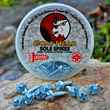
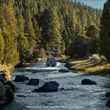





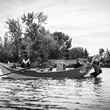
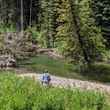



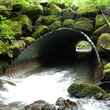
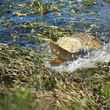



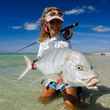
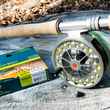



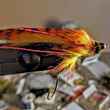


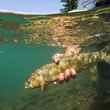

Comments
Winston replied on Permalink
Well done, Todd. Sage advice.
Brian Trettel replied on Permalink
2 other points that should be included- 1- learn to fish with and use barbless hooks to minimize damage to the quarry…. And, quickly release the fish once netted and minimize the time it is out of the water- free the fighter for the next fisherman to enjoy!
Geoff Roznak replied on Permalink
Decent article, but far, far to trout focused.
Jim Parks replied on Permalink
Excellent list. I would add…..
Know and TEST your knots regularly! I test mine after every fish caught or every snag. Otherwise at least every 10 mins. Also, keep your hooks SHARP!
Learn your bugs? In streams without big hatches, such as where I fish in the Smoky Mountains, I don’t use a hatch chart and don’t care. It’s attractor patterns that work. Instead, I’ve made a “catch chart” where I’ve logged every trip since 1989. I have it down to 5 patterns and average over 25 per trip and recently caught my PB at 27” brown and record # in one day of 123. I fished from 9am to 3pm.
Jim Parks
Instagram: TailsOfTheSmokies
Pages